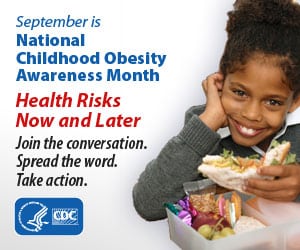

Childhood obesity is an epidemic. In 2012, more than one-third of children and adolescents in the U.S. were overweight or obese.
Let that statistic sink in for a moment.
The global figure is changing. Being overweight is primarily an issue of health. If you don’t believe me, carry around a ten-pound bag of potatoes for a day. I think that will have you see the strain this places on your heart very quickly.
Childhood obesity has more than doubled in children and quadrupled in adolescents in the past 30 years. The well-understood negative health effects of obesity are severe: pre-diabetes, cardiovascular disease, pulmonary disorders, increased risk for cancer, and more.
Those are only the physical effects. Obese children can also suffer from quality of life issues, such as poor self-esteem and depression.
Excess weight in terms of complementary medicine is seen as an excess condition of toxicity that needs to be eliminated. Did you know that obesity is as much linked to cardiovascular disease as cigarette smoking? However, you don’t see any ad campaigns out there telling you that fast food will lead to gangrene.
The major culprits leading to childhood obesity? Diet, exercise – and family!
Certainly diet and exercise are not a surprise. Obesity can actually start in the womb. Maternal diet, gestational diabetes, in utero exposure to glucocorticoids, and birth weight have all been associated with childhood obesity.
But family? Yes! As practitioners, you need to evaluate the entire family should you have an obese child as a client. There will be many clues found within the family structure and dynamics that can help you help your client.
- What are the family’s social interactions? Do they eat together? Is parental support available? Are the parents away, not supportive, or just unaware of the health consequences of obesity in their children? Are the parents a good role model relating to eating habits? Do they deal with stress by binge eating, buying unhealthy snack foods, and fast food?
- The family’s ethnicity and culture can have an effect as well. For example, African American girls and women are often less exposed at home to using nutrition as a means of maintaining a healthy weight. In general, they also receive less negative social pressure at home from being overweight.

Then create a plan to encourage healthier eating habits and incorporate additional exercise.
Research supports that parental and family participation is key when working with an obese child to lose weight.
What can you do to encourage healthier eating habits in a child?
Prevention is a lot easier than addressing a weight problem after the fact. If you have a client who is a child, or even if this is your own child, and they appear to be gaining unhealthy weight, it is worthwhile to take their body mass index (BMI) measurement. There are scales that incorporate BMI readings into their readouts, or you will have to calculate it using a BMI calculator for children.
You can then determine if the child is at risk for being overweight, or is in fact overweight or obese. You then have a baseline to measure against over time.
Then you can work with your client’s family to implement some of these suggestions:
Serve healthier options at home (meals and snacks), school and childcare
- Everyone in your client’s family – or your own family – needs to be on board! Family- based intervention is the best motivation in changing habits.
- More vegetables – try implementing a green smoothie – with berries – in the morning! If the child routinely says no to anything green, you need to make a focused effort to get them to try and find at least a few that they will eat. In my Kids in the Kitchen class, I have recipes with fruit smoothies. If you make a smoothie with darker fruit like cherries and blueberries, then add a green leaf, they won’t see the green. Serve that. The next day, add 2 green leaves. Continue to add greens until you think your child might notice and complain. Their taste buds will gradually get used to the green.
- Read this excellent blog on how to “Say no to carbs” in kids’ school lunches. Print it out and share it with the child’s daycare provider; talk with them about how to provide healthier options, or send the child to daycare with their own meals and snacks. 5 million kids age 5 or less spend 33 hours/week in childcare where they consume most of their daily calories!
- Toss the sugar, saturated fats, and sodium! Make sure the family members are good role models. If they don’t have junk in the house, the kids can’t eat junk in the house! Alternatively, ensure they have a lot of healthy snacks available, such as sliced carrot sticks, other cut veggies, and hummus, and water.
- Introduce healthy fats into the family’s meals. Try sliced avocados or nuts. Potato chips are not a healthy fat!
- Swap-out the junkie stuff – the above article talks about swapping out carbs like crust,
sandwich bread, and taco shells. It can be easy to do.
- Consider removing gluten and other highly inflammatory foods – they create inflammation that can cause leaky gut, as well as lead to degenerative diseases including diabetes. If you are revisiting a child or family’s diet, it is a great opportunity to consider eliminating gluten, dairy, and eggs while bringing them back into balance.
- Increase vitamin C – People with Type 1 diabetes and insulin resistance, metabolic syndrome, or pre-diabetes have low vitamin C levels. Vitamin C lowers sorbitol in diabetics. Sorbitol is a sugar that can accumulate and damage the eyes, nerves, and kidneys of diabetics. Vitamin C may improve insulin sensitivity and glucose tolerance in Type 2 diabetes, as well.The transport of vitamin C into cells is facilitated by insulin. It has been said that, due to impaired transport or not having enough in the diet, a relative vitamin C deficiency exists in those with blood sugar issues. This may be responsible for the increased cardiovascular issues seen in diabetics.
Create a supportive family environment for healthier eating habits!
- Have everyone in the family maintain a food journal – this helps all of the members of a family get a handle on what they are eating each day, along with when they are snacking.
- Serve relaxed family meals at the dinner table – so many people eat in front of the TV, or standing at the counter while reading emails, or wherever. It is no wonder children are often gulping down their meals and immediately getting seconds – or even thirds. Everyone’s digestion will be healthier if mealtime is relaxed – slowed down – and has some conversation and joy. It is a great time to share everyone’s day and re-connect with busy family members!
- Limit fast food, which is usually not healthy, involves eating in the car, and is often supersized!
- Talk to the child about hunger versus fullness – do they understand the physical signs of when they are truly hungry or when they are likely to be full? This brings us back to the earlier point on gulping down meals. It takes approximately 20 minutes for fullness signals to transmit from your stomach to your brain, so if you are eating too fast or watching TV rather than focusing on your meal, you may be on seconds before your brain registers that you are full! Kids are also likely to snack when they are bored or sitting in front of the TV.
- Talk about what the “ideal” plate of food should look like, with the majority of the plate being vegetables, along with healthy proteins and fats. Discuss portion sizes.
- Do not use junk food as a reward – use a favorite activity as a treat. This can even be better if the activity is truly one incorporating activity!
What can you do to get a child to exercise more?
I can remember when I was young that we didn’t have all of the electronics, and not all of the homework, either. It was definitely a simpler time, and our daily habit was playing outside. The kids on the street would be outside playing from the moment we got home from school, only going in when it was time for dinner. Nowadays? Now we have to force some kids to go out and play!
I hear a lot of excuses! While there is likely some truth to these, I feel they all can be overcome if you work with your client’s family.
- Schools minimize gym time and other scheduled activity!
- Electronics and TV are too tempting as an alternative – even toddlers are watching too much TV! This keeps kids indoors too much as well. Plus they are often munching on unhealthy snacks while doing this.
- Too much homework? Many parents feel that their kids are so inundated with homework that their outdoor play time is being robbed. What do you think?
- Sedentary role models? Parents who watch a lot of TV rather than engaging in exercise or outdoor activities are less likely to encourage their kids to stay active!
- Neighborhood sprawl – I often hear people say their neighborhoods are too hilly, remote from local schools and playgrounds, or don’t have sidewalks, so they are not conducive to kids biking or walking.
- Urban neighborhoods – may be unsafe, have higher housing density with fewer parks and play spaces. There may also be fewer healthy supermarkets to choose from.
Here are some strategies to get your client’s family moving!
Help the child stay active by involving the family!

Suggest they buy a tracking device, like a Fitbit, and hold family contests each week to see who walks the most steps, or maybe the most stairs climbed. Perhaps the parents can offer rewards for exercise goals being met. These would be something other than food, such as points towards a favorite outing.
Children should have at least 60 minutes of moderate-intensity exercise most days of the week. Parents need it, too!
Have mom and dad maintain a chart which features the family exercise for the day!
Limit the electronics, and create a new outside hobby!
This only works if the child’s role models are also following this guideline! Studies have shown that kids who watch a lot of TV or play a lot of video games are at a greater risk for becoming overweight. Not only are kids sitting all of the time, which is incredibly unhealthy, but they are less likely to be outside getting their vitamin D, an important nutrient for their immunity and so much more.
If your client’s family has the space, suggest they start a vegetable garden in their backyard. Kids actually love to garden, and in my experience they enjoy eating their harvest as well. There is a ton of information available on the internet relating to how to grow lovely organic produce right in your backyard.
This is also another great opportunity to teach kids about how soil quality, composting worms, and toxin-free care provide the most nutrient-dense harvest.
This will not only get the children moving, but it will also teach them responsibility since they are the primary “farmer” doing the weeding and watering.
To take this one step further, if your client’s community has a community-based agricultural space, see if the child would like to participate with their parents!
Encourage your client to play recreational sports or participate in other physical activities
I’m sure you all know the kid in the neighborhood who was obese in grade-school but then blossomed in junior high school. I’ve met many such kids. What amazes me about some of these kids is they did it on their own, with no help from parents or doctors! Some just decided one day they no longer want to be fat, and they began to make simple changes. Usually they modified their diet first, grabbing fruit slices rather than chips. Then they just try to be more active. Each lost pound becomes even more of an incentive to lose the next pound. Suddenly, they are playing basketball at lunchtime. Their self-esteem increases. They basically teach themselves to incorporate good habits into their life.
So how do you create this type of internal motivation in your client? Just start with something simple.

Get creative. Make it FUN. Have the parents create an obstacle course for the kids on their street. Or have them organize relay races! Teach the child some old-school games such as “capture the flag”. Anything to get them motivated to move and PLAY!
If sports is not the child’s cup of tea, what about dancing? Or rollerblading? Or Boy Scouts/Girl Scouts, since they do a lot of outside activities? Find an athletic interest your client will at least try. Encourage their parents and other family members, such as cousins, to join them! I had a patient who liked to run, so she routinely had her kids trail along behind her…one on a bike, and one on a skate-board!
Help the child to understand the importance of physical fitness
Younger children may not really think about bike-riding as good for their health. They just want to have FUN. But it is good to continually teach them about all of the great health benefits, too. Kids may know that being active will keep them at a healthy weight, but they may not know that it will keep their heart, lungs, and bones strong.
As your children get older, talk to them about the deeper health aspects that they might not be aware of, like controlling their blood sugar! The Diabetes Research Institute has a lot of good information relating to kids, blood sugar, pre-diabetes, as well as diabetes.
Better diet and exercise can have so many additional quality of life benefits
If you can get your client working to improve their diet and exercise, they will likely sleep better, feel better – both physically and mentally – and be more connected. It is always such a shame to see an overweight child who has been relegated to the sidelines due to their weight.
If you would like to learn more and go deeper with understanding how you can help your clients bring their body into balance and see this by being at a healthy weight, I encourage you to investigate my Nutritional Endocrinology Practitioner Training course. This is a 36-module course that goes into great depth with the anatomy, physiology, and pathophysiology of the body. You’ll learn and understand more of the science that makes your client’s tick. Apply, schedule a consultation, and find out more.
Share this:

Are you feeling stuck?
Do you feel as if something is missing from your practice that's keeping you from delivering breakthrough outcomes for your clients?.
Recent Posts
Our Programs
Nutritional Endocrinology Practitioner Training (NEPT)
The Mastery and Certification tier is our flagship program and provides everything you need to feel confident as a practitioner who knows how to get results that lead to healthy and happy clients.
Functional Assessment Mastery
Explore the relationships between the most important hormones and their relationship with nutrition.
Functional Nutrition Mastery
Learn how to support your clients to eat and supplement in a way that reduces and eliminates chronic symptoms.
Medical Disclaimer: The information on this website is not intended to replace a one-on-one relationship with a qualified health care professional and is not intended as medical advice. It is intended as a sharing of knowledge and information from the research and experience of Dr. Ritamarie Loscalzo, drritamarie.com, and the experts who have contributed. We encourage you to make your own health care decisions based upon your research and in partnership with a qualified health care professional.
Disclosure: Sometimes (but not always), when I share resources in my programs, newsletter, and on my website, I'm using an affiliate link, which means I do make money if you buy. My credibility is extremely important to me; therefore, I only endorse the products, services, and people I believe in. DrRitamarie.com is independently owned and the opinions expressed here are my own.
Click here to see our Privacy Policy.



 sandwich bread, and taco shells. It can be easy to do.
sandwich bread, and taco shells. It can be easy to do.








